
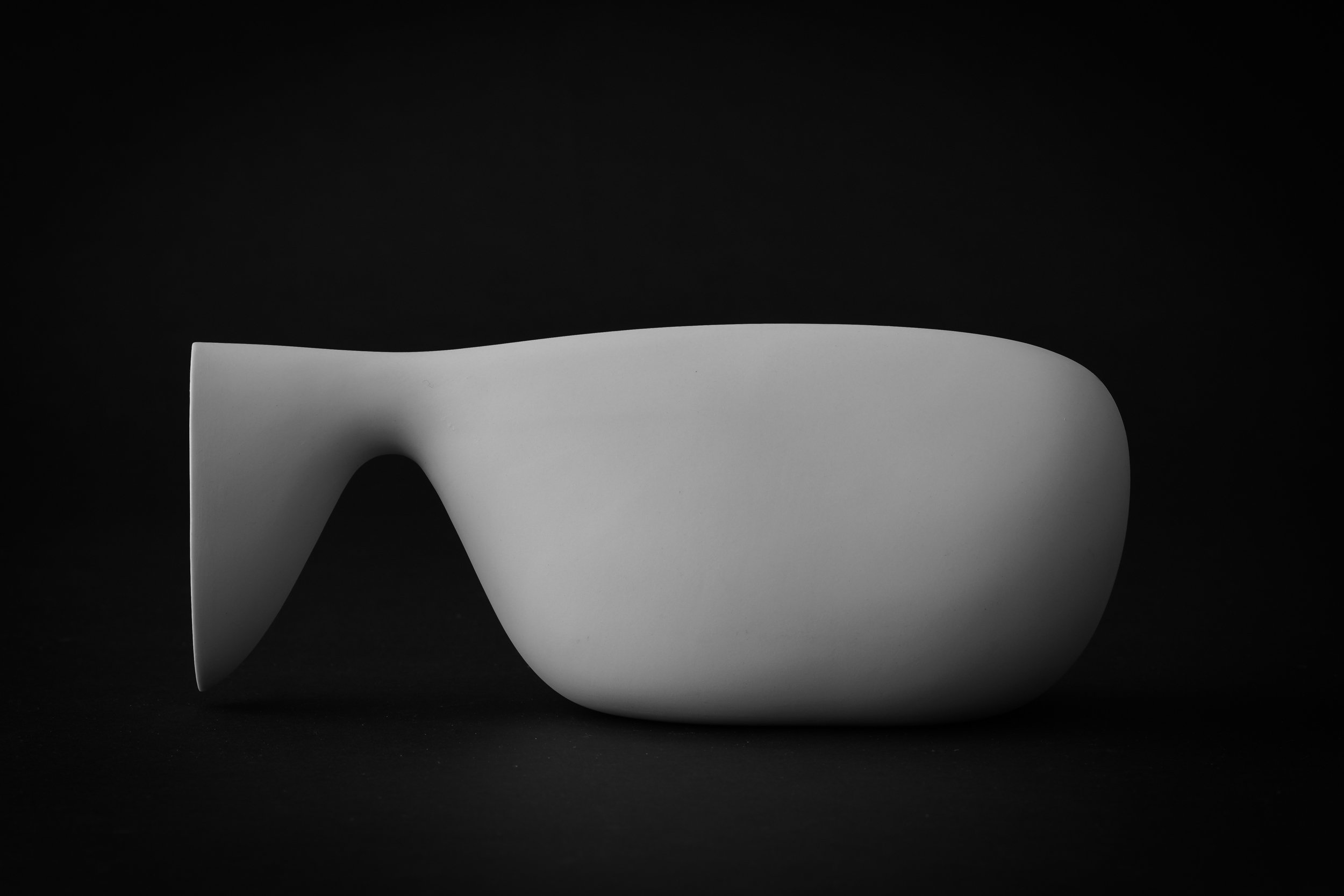
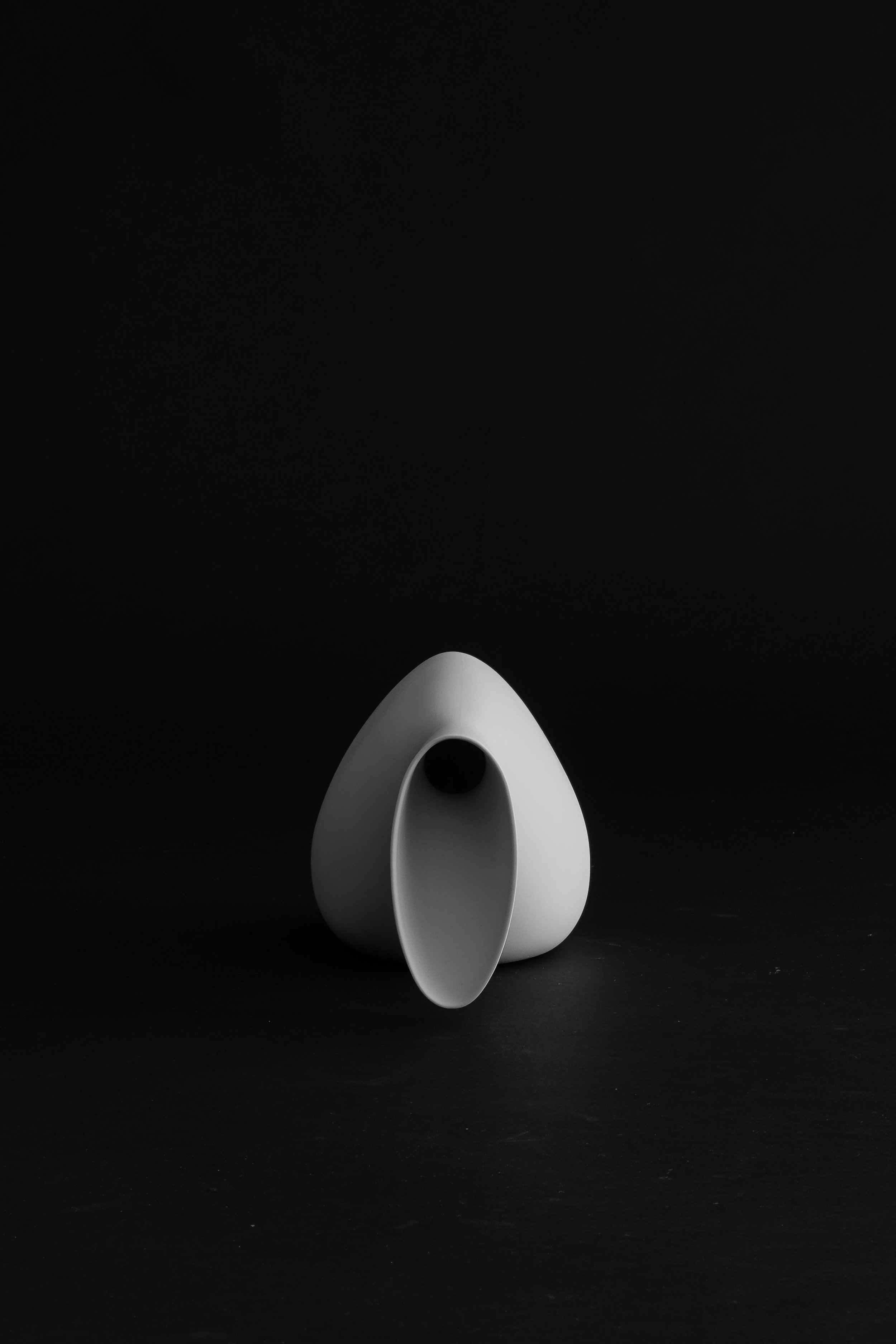
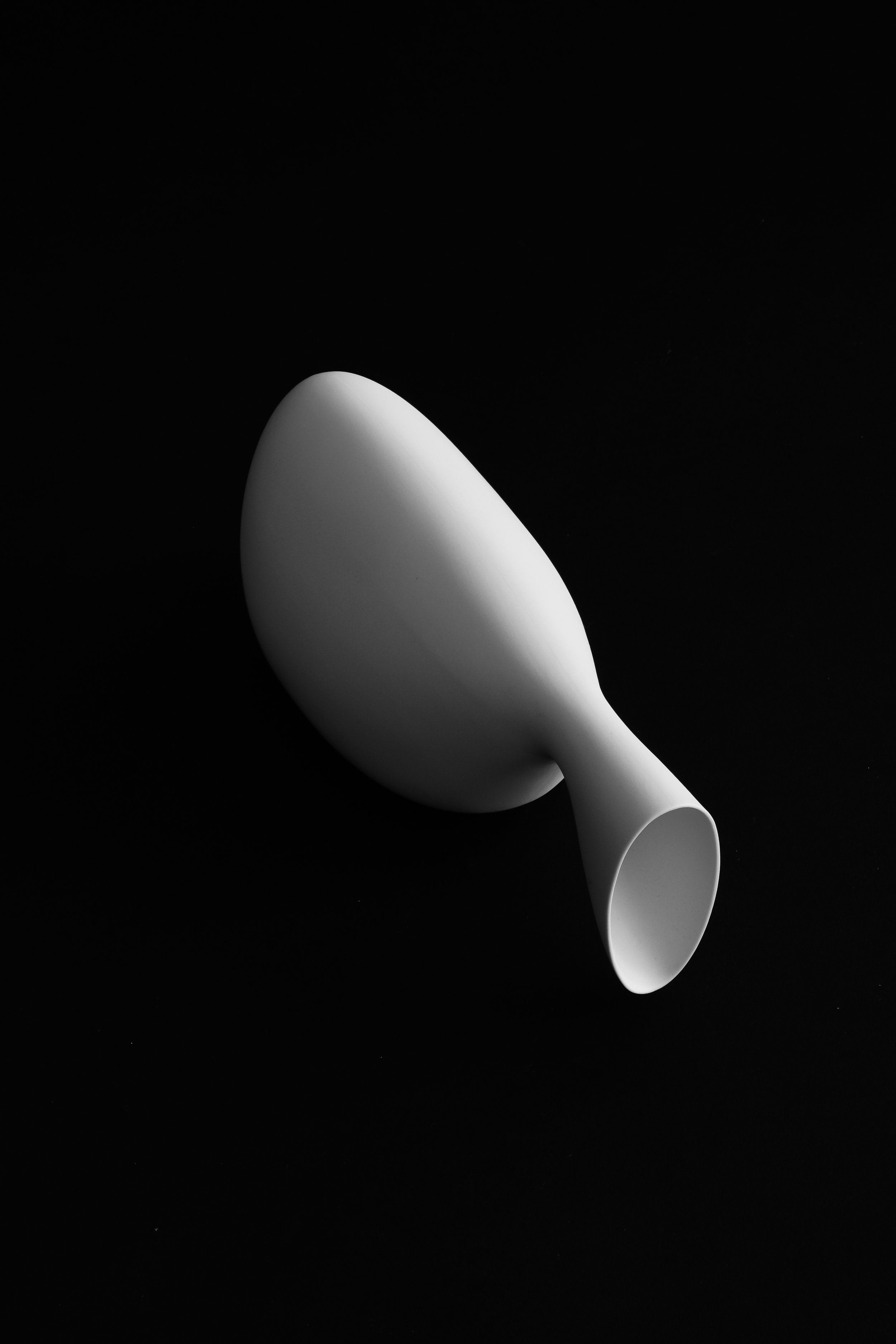
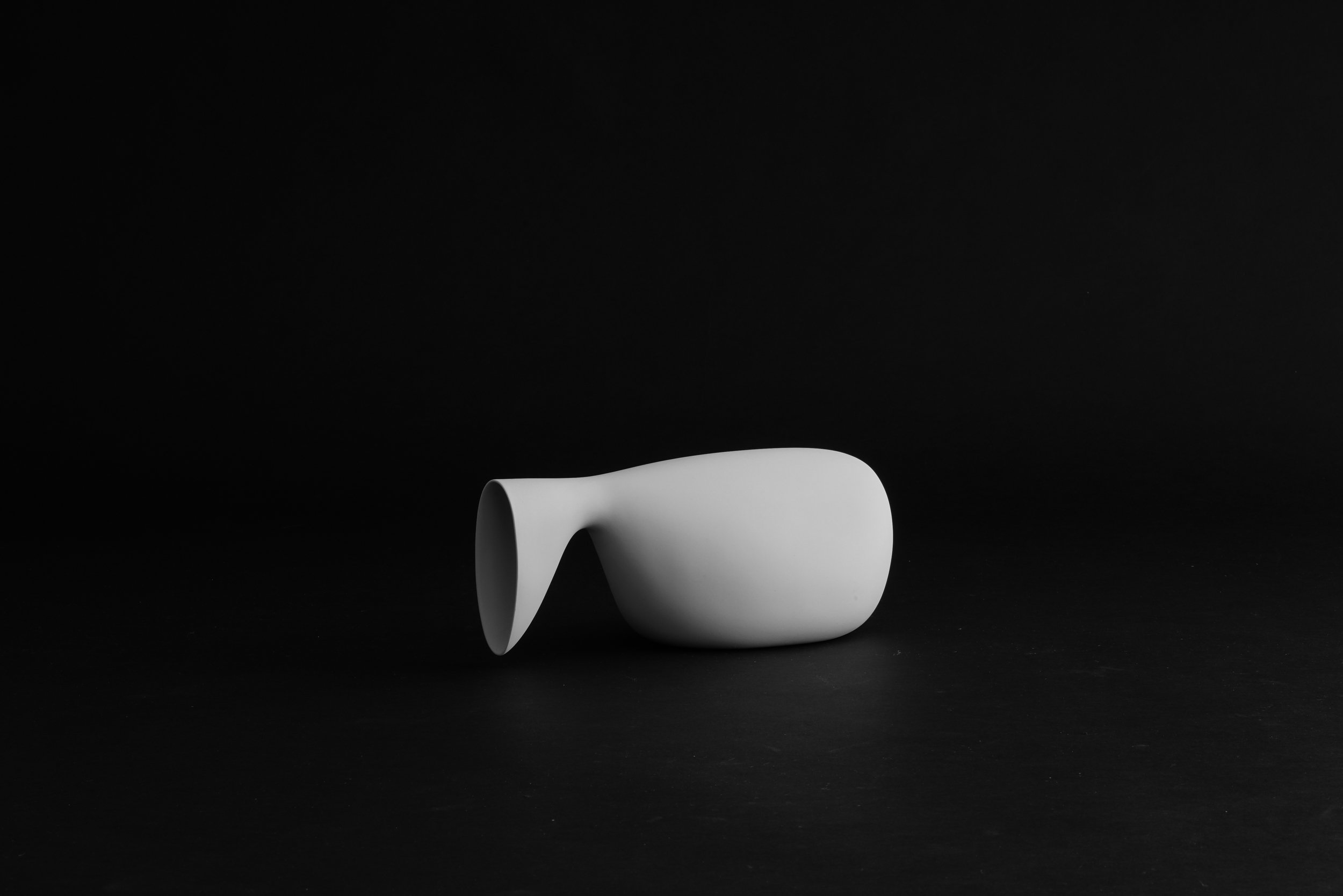
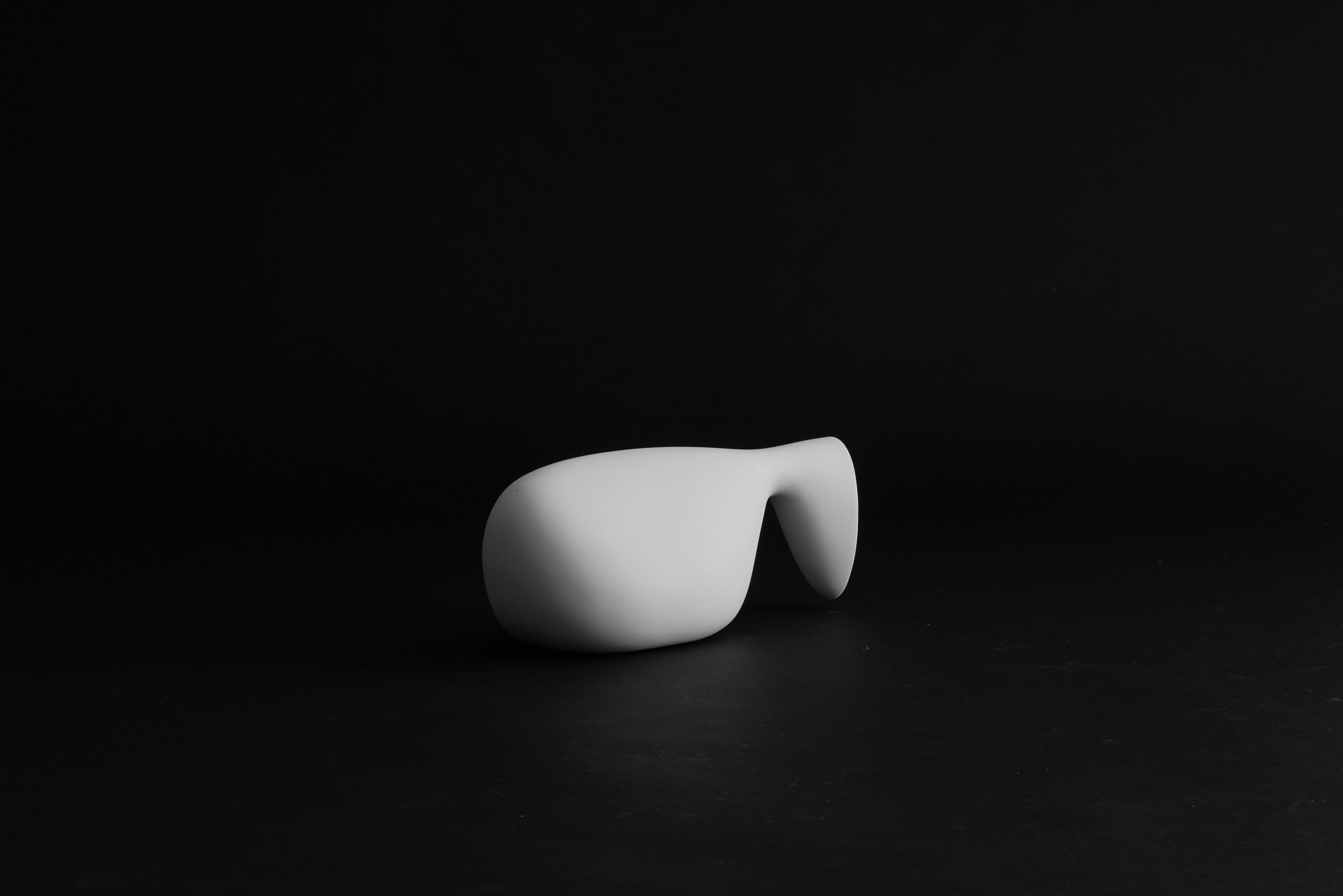
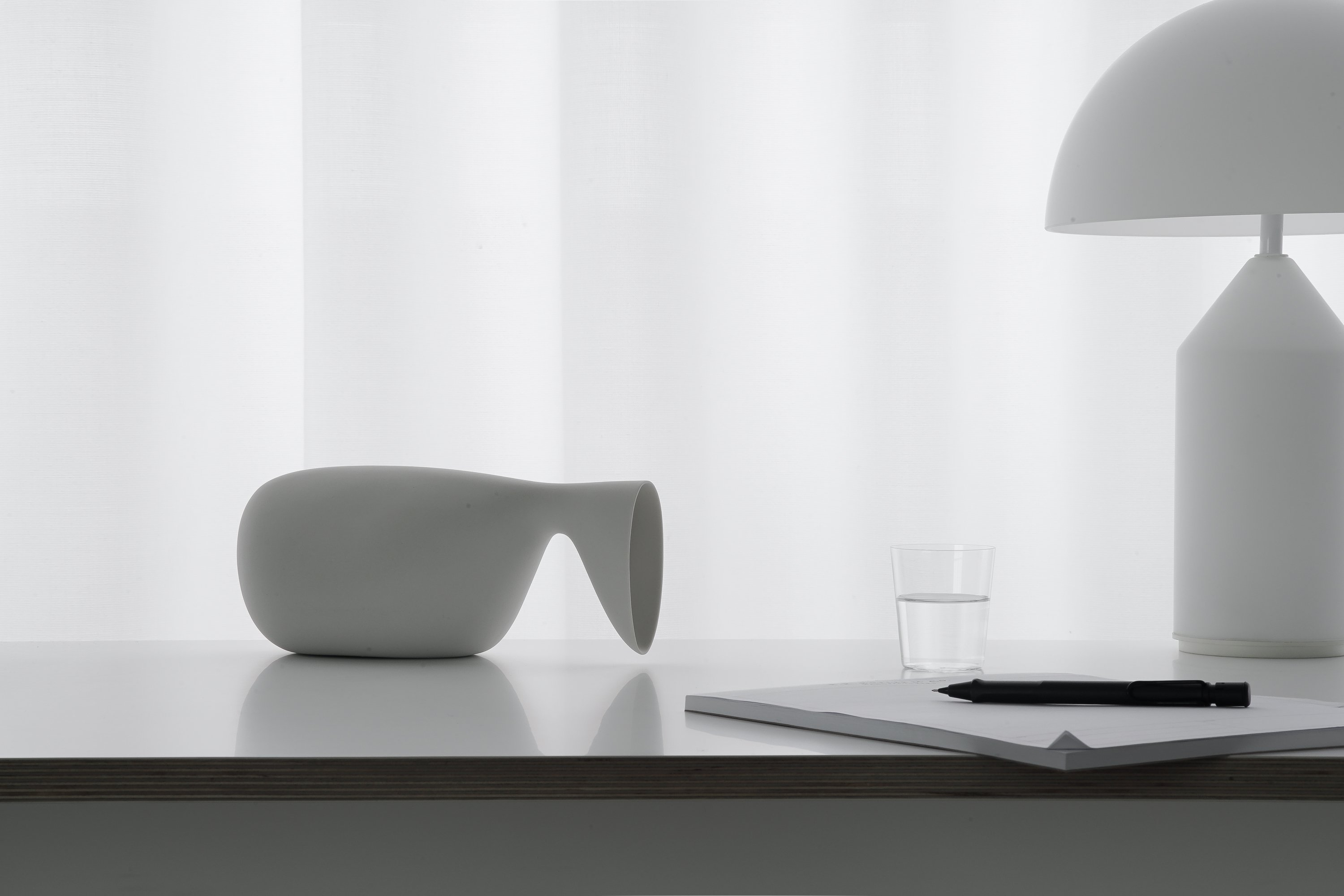
TAKAHIRO TSUCHIDA
DESIGN COLUMN Vol.2
Aldo Bakker - Water carafe
オランダ人デザイナーのアルド・バッカーは、1990年代にデザインレーベル「Droog」を設立したハイス・バッカーを父にもつ。デザイナーであり教育者でもある父ハイスは、オランダのコンセプチュアル・デザインを大きなムーブメントにした立役者といっていい。そのムーブメントにおいては、方法論やプロセスが重視される一方、アウトプットの質にこだわらない傾向があった。それに対してアルドは、ものをつくる過程で何度も行ったり来たりを繰り返しながら、時間をかけて慎重にデザインの完成形を探っていく。彼の作品は、形状、色彩、質感などが美しく統合されているものばかりだ。
2007年に発表されたセラミック製のカラフェも、全体が繊細な曲線で構成され、柔らかく手のひらになじむ、とても彼らしい形をしている。彼が南フランスのイエールのヴィラ・ノワイユで2010年に行った個展は「Creatures - studies for existence」と題されていたが、このカラフェの姿も生き物のよう。こうして形態や仕上げをきわめていくアルドの姿勢は、職人的ともいえる。たとえば彼は日本の漆について制作に要する時間や手間に共感し、漆を用いた家具も発表している。
ただし彼自身が職人なのかデザイナーなのかと尋ねたら、迷うことなくデザイナーと答える。手を使う作業を大切にしながらも、一方において頭の中でイメージを豊かにふくらませ、さらに加えることも取り去ることもできない形を創造するのが、彼にとってのデザインだ。そのために十分な時間と手間をかけることは、アルドの作品に一貫するコンセプトでもある。だから彼は、自身のスタイルとコンセプチュアル・デザインを対極とする見方を否定する。コンセプトのないデザインは存在せず、どこに重点を置くかの違いでしかない、と。
写真のカラフェは、2012年、京都のスフェラで彼の個展が開催された時に入手した。個展を機に来日した彼のプレゼンテーションでは、過去から現在のさまざまな芸術や建築がデザインの糧になっていることが語られ、その中にはジョルジョ・モランディやリュック・タイマンスの絵画があった。そこで紹介されたかどうかわからないが、彼の作風との共通性を感じさせる人物に、オランダの建築家で修道士でもあったハンス・ファン・デル・ラーン(Dom Hans van der Laan)がいる。彼は、自身が長く過ごした教会の工事に30年を費やしたという。その建築に通じる、現代の多くのデザインと異なるアルドのものづくりの時間軸には、心を安らかにするものがある。
土田貴宏 / ライター、デザインジャーナリスト
1970年北海道生まれ。2001年からフリーランスで活動。国内外での取材やリサーチをもとに、デザイン誌をはじめ各種媒体に寄稿している。
Dutch designer Aldo Bakker, his father is Gijs Bakker, who founded the Droog design label in the 1990s. Gijs, a designer and educator, was instrumental in creating a major movement in conceptual design in the Netherlands. In that movement, there was an emphasis on methodology and process, but a tendency not to focus on the quality of the output. Aldo, on the other hand, carefully explores the perfection of his designs over time, going back and forth repeatedly in the process of making things. His works are all beautifully integrated in shape, color, and texture.
The ceramic carafe released in 2007 is also a very typical example of his work, with delicate curves throughout and a shape that is soft and comfortable in the palm of the hand. His 2010 solo exhibition at Villa Noailles in Hyères, southern France, was titled "Creatures - studies for existence," and this carafe is like a living creature. Aldo's approach to form and finish can be described as artisanal. For example, Aldo sympathizes with the time and effort required for the production of Japanese lacquer, and he has also produced furniture using lacquer.
However, when asked whether he himself is a craftsman or a designer, he answers without hesitation that he is a designer. For him, design is a process that involves the use of his hands, while at the same time creating a form that cannot be added to or taken away from, and that is richly imagined in his mind. Taking the time and effort to do so is a consistent concept in Aldo's work. Therefore, he rejects the view that his style and conceptual design are opposites. There is no design without concept, but only a difference in where the emphasis is placed.
The carafe in the photo was acquired during his solo exhibition at Sfera in Kyoto in 2012. In his presentation during his visit to Japan on the occasion of his solo exhibition, he talked about how various art and architecture from the past and present feed his designs, and among them were paintings by Giorgio Morandi and Luc Timmermans. I don't know if he was introduced there, but one person whose style seems to have a lot in common with his own is the Dutch architect and monk, Dom Hans van der Laan. He spent 30 years working on the church where he spent so much time. There is something comforting about the time frame of Aldo's manufacturing, which is different from many contemporary designs, but similar to the architecture.
Takahiro Tsuchida / Writer, Design Journalist
Born in Hokkaido in 1970, Tsuchida has been working freelance since 2001. Based on interviews and research in Japan and abroad, he contributes to various media including design magazines.